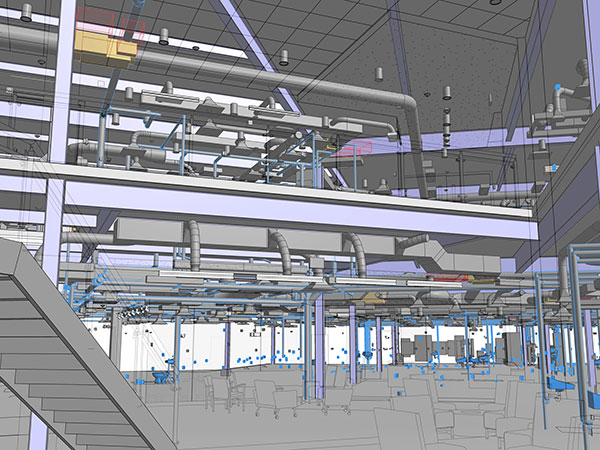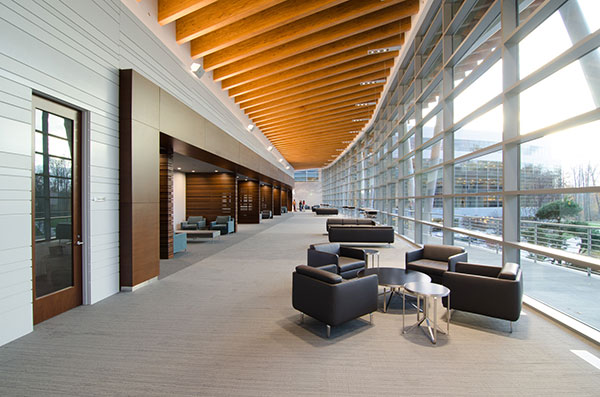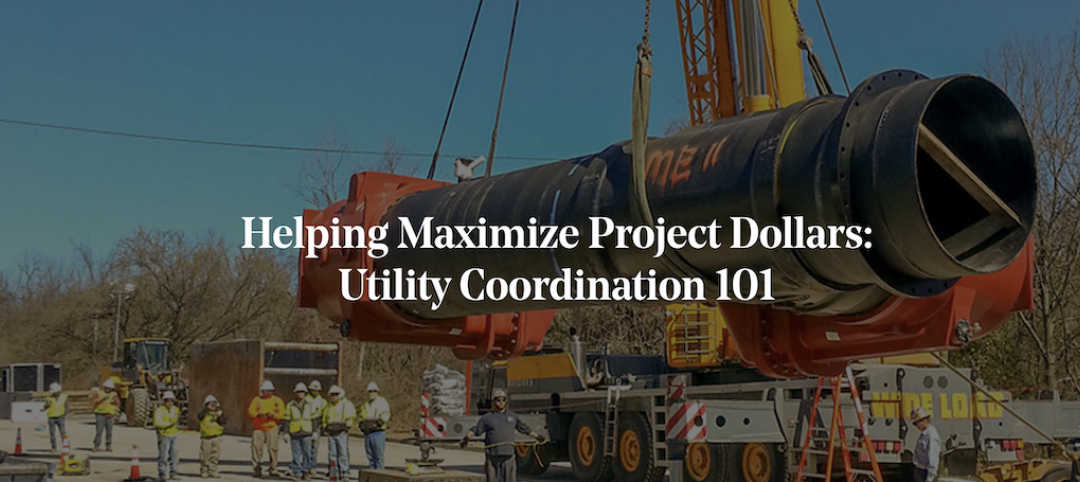They say hindsight is 20/20. “If only we knew then what we know now, we would’ve done things differently.” While it’s always good to evaluate outcomes, what if there was a way to look into the future and avoid hindsight regret?
When it comes to building projects, Building Energy Modeling (BEM) can help us do just that. BEM is a versatile tool that allows designers, engineers and architects to predict building energy use during the design of new buildings and retrofits of old buildings. Rather than looking into our Magic 8-Ball and hoping our design decisions are durable, we can use energy modeling to inform our design process and make data-based decisions.
The Basics
To understand building energy modeling, it’s important to first understand how the simulation works. When we input information such as a building’s geometry, orientation, location, construction materials, mechanical components, intended use and operating schedule, the software creates a virtual replica of the building. The program then takes local weather patterns into account and gives us estimates and insights about energy usage, occupant comfort and energy costs. However, the “garbage in, garbage out” adage holds true for energy models—the data we receive is only as accurate as the data we put in.

Why Modeling Matters
Let’s dispel a myth: energy models aren’t only used by engineers to see energy statistics and prove code compliance. Before the existence of the US Green Building Council that may have been true, as modeling techniques were primarily used by mechanical engineers to determine various building performance characteristics and buildings’ heating and cooling loads. However, now building energy modeling tools are widely used by architects as well. Rather than focusing solely on HVAC system selections, design professionals can use the tool to strike the right balance between competing factors, such as access to daylight and air conditioning usage, and evaluate multiple engineering system alternatives.
In fact, at GS&P our teams of engineers and architects work together to input known or assumed design decisions so that we can see how our choices will impact overall building performance and our client’s bottom line. For example, we can see if it makes sense to have a south-facing glass wall or if cost outweighs the cool-factor and will ultimately send our client’s air conditioning bill through the roof. We also might discover that it’s not the location of the window wall but rather the type of glass that’s causing the problem; we can change the material in the simulation and see what kind of impact the design change would have on overall energy efficiency.
 Energy efficiency doesn’t mean window walls are out of the question—we just use data to design it in a way that’s best for the building.
Energy efficiency doesn’t mean window walls are out of the question—we just use data to design it in a way that’s best for the building.
Levels of Modeling
There are several different levels of energy modeling depending on how much detail you’re looking for. Models generated early in the design phase of a project can help with high-level decisions about a building’s design or configuration. These models typically use a handful of assumptions and estimations about unknown or missing information, such as the type of wall insulation or windows that will be used, but if the assumptions are fact-based and are applied equally across the model, they’ll provide valuable insights. These models are the least time intensive, with the longest taking three to four days.
There’s also alternative comparison modeling. This simulation still uses high-level input information, but it also incorporates a full years’ worth of weather data when completing the calculations. These models provide significant information, especially for comparing specific building systems and components. With a turnaround time of one to two weeks these models take longer to produce, but they give us more detailed information to work with.
Finally, there’s the most detailed level of energy modeling: 8760 modeling. If you haven’t guessed it already, that magic number represents the total number of hours in a year. These models also use a full years’ worth of weather data, as well as other specific inputs about construction components, HVAC controls and operating parameters, specific building usage schedules and utility rate information. Producing 8760 energy models can be time intensive, taking between two to four weeks to complete depending on a project’s complexity. However, the information we receive from these models allows us to assess specific building systems and components and compare a multitude of alternatives and configurations. This is also the type of model you would submit for a LEED project or to satisfy compliance requirement for the International Energy Conservation Code.
Modeling for More
We use energy models to prove that a building’s overall energy performance will meet or exceed energy codes. However, we also use energy models to meet owners’ sustainability goals and pursue voluntary rating systems such as LEED and Green Globes. Additionally, at GS&P we use energy models and output data to meet the American Institute of Architects’ 2030 Commitment, a national initiative that calls for all new buildings, developments and major renovations to be carbon-neutral by 2030. GS&P has been part of the program for more than five years, furthering our commitment to sustainable, environmentally-friendly design.
With building energy modeling, I think our foresight can be 20/20—and maybe even better. By developing energy models together with the design team early in a project, we can use data to avoid future problems and pitfalls. Stay tuned for my next post in this series where I’ll talk about how we can use energy modeling to create a space that is as enjoyable as it is sustainable.
More from Author
Gresham Smith | Oct 16, 2024
How AI can augment the design visualization process
Blog author Tim Beecken, AIA, uses the design of an airport as a case-study for AI’s potential in design visualizations.
Gresham Smith | Aug 17, 2023
How to design for adaptive reuse: Don’t reinvent the wheel
Gresham Smith demonstrates the opportunities of adaptive reuse, specifically reusing empty big-box retail and malls, many of which sit unused or underutilized across the country.
Gresham Smith | May 24, 2023
Designing spaces that promote enrollment
Alyson Mandeville, Higher Education Practice Leader, argues that colleges and universities need to shift their business model—with the help of designers.
Gresham Smith | Apr 24, 2023
Smart savings: Commissioning for the hybrid workplace
Joe Crowe, Senior Mechanical Engineer, Gresham Smith, shares smart savings tips for facility managers and building owners of hybrid workplaces.
Gresham Smith | Mar 20, 2023
3 ways prefabrication doubles as a sustainability strategy
Corie Baker, AIA, shares three modular Gresham Smith projects that found sustainability benefits from the use of prefabrication.
Gresham Smith | Jan 19, 2023
Maximizing access for everyone: A closer look at universal design in healthcare facilities
Maria Sanchez, Interior Designer at Gresham Smith, shares how universal design bolsters empathy and equity in healthcare facilities.
Gresham Smith | Dec 20, 2022
Designing for a first-in-the-world proton therapy cancer treatment system
Gresham Smith begins designing four proton therapy vaults for a Flint, Mich., medical center.
Gresham Smith | Nov 21, 2022
An inside look at the airport industry's plan to develop a digital twin guidebook
Zoë Fisher, AIA explores how design strategies are changing the way we deliver and design projects in the post-pandemic world.
Gresham Smith | Feb 13, 2022
Helping maximize project dollars: Utility coordination 101
In this post, I take a look at the utility coordination services our Transportation group offers to our clients in an attempt to minimize delays and avoid unforeseen costs.
Gresham Smith | May 7, 2021
Private practice: Designing healthcare spaces that promote patient privacy
If a facility violates HIPAA rules, the penalty can be costly to both their reputation and wallet, with fines up to $250,000 depending on the severity.
















